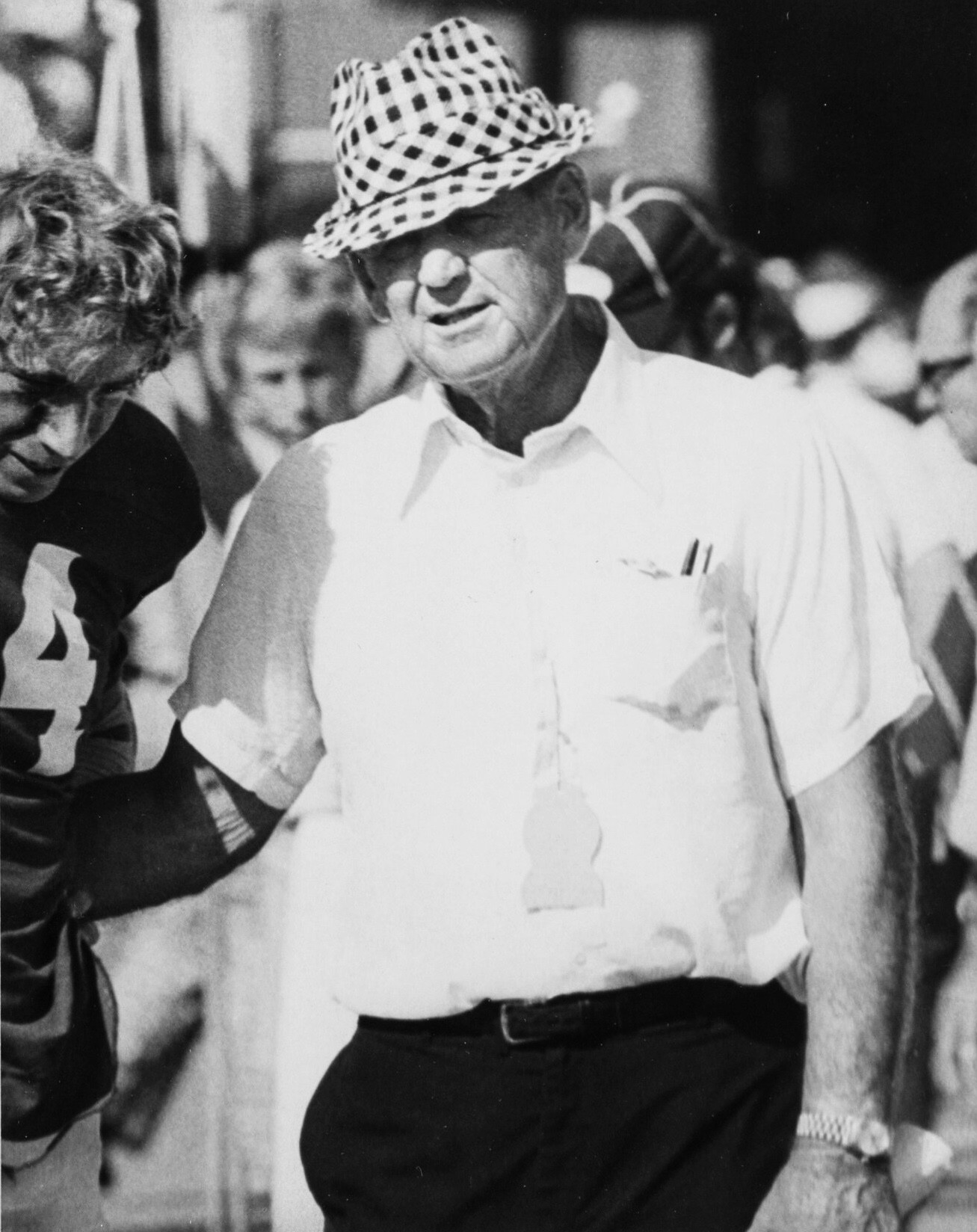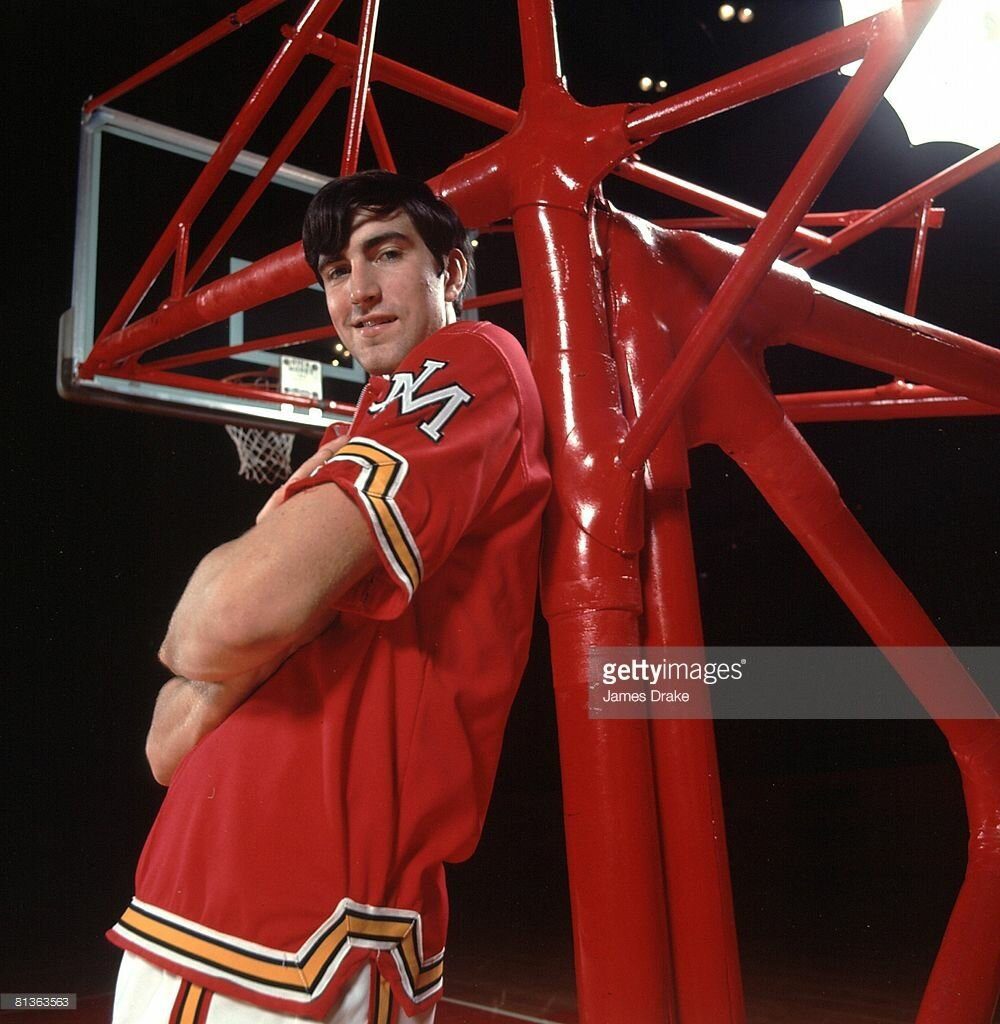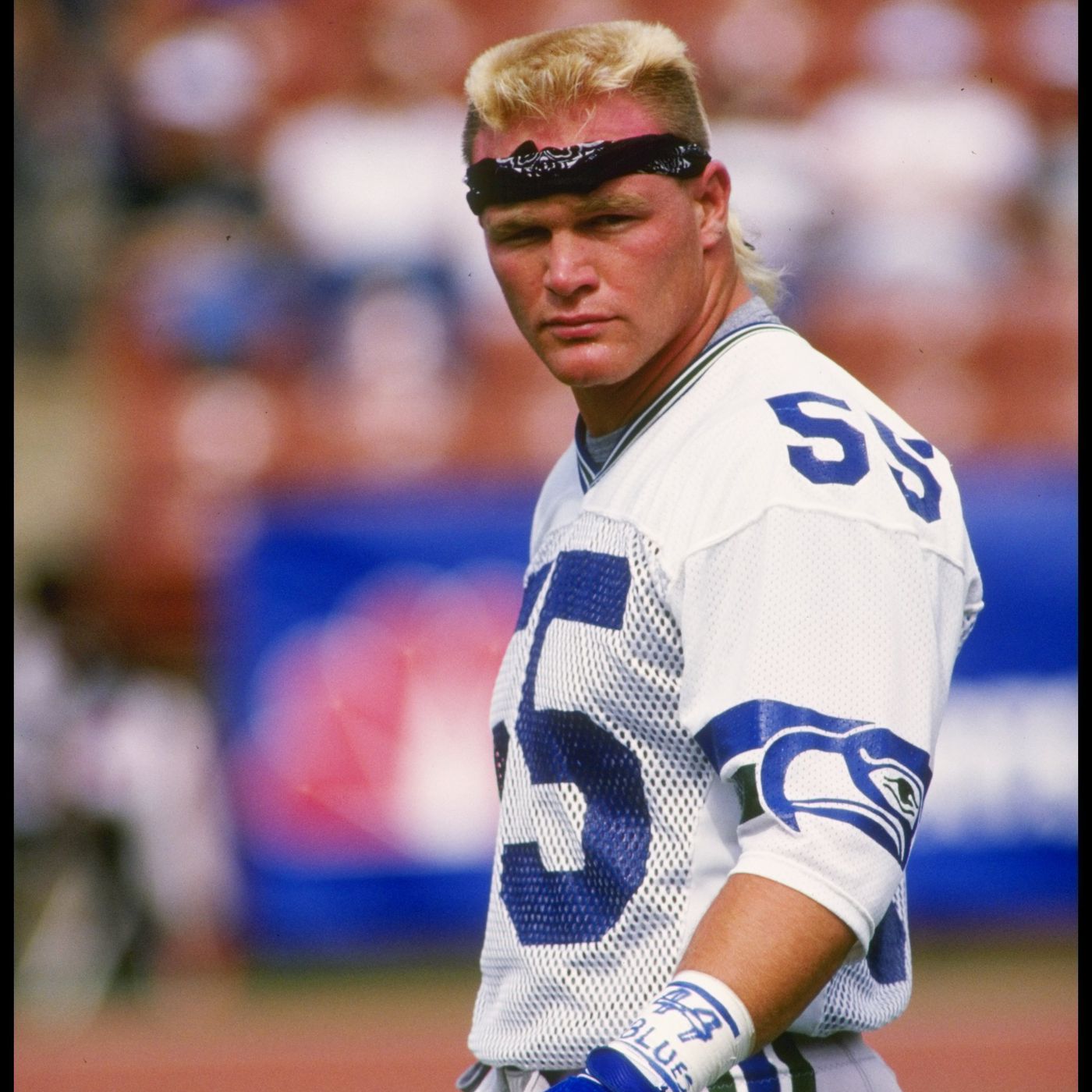Joe Namath said, “His nickname was Bear. Now imagine a guy that can carry the nickname Bear.”
At the time of his retirement following the 1982 season, Paul William Bryant was the winningest coach in the history of Division I college football. In a career that spanned 38 seasons, he was head coach at Maryland, Kentucky, Texas A&M, and Alabama. Bryant won seven national championships and 15 conference titles. In 38 seasons as a head coach, Bryant had only one losing season—his first at Texas A&M—and participated in 29 postseason bowl games, including 24 in a row at Alabama. The Bear had a career record of 323-85-17 [.780] and remains the youngest head college football coach to win 300 games and amass 30 winning seasons.
Born in Moro Bottom, Arkansas, September 11, 1913, Bryant was the 11th of 12th children [three of whom died as infants] born into a poor farming family. He earned the nickname that would stick with him for life by accepting a challenge to wrestle a bear at a carnival for one dollar. Although Bryant took on the bear and had his ear bitten, the carnival never paid him. By 13, Bryant—who would eventually grow to an adult height of 6’4”–stood 6’1”. He had never seen a football game before he played in his first one, as an eighth-grader playing for Fordyce High School. In his senior year, Bryant was an all-state lineman while leading Fordyce to the 1930 state title. He failed to graduate with his class and accepted a football scholarship to the University of Alabama, where he enrolled in high school for the 1931 fall semester to earn his diploma while practicing with the Crimson Tide. Considered the “other end” to future Hall of Fame receiver Don Hutson, Bryant helped Alabama go 23-3-2 from 1933 to 1935. He was named Second-Team All-SEC as a junior and made Third-Team All-Conference as a senior.
Bryant secretly married Mary Harmon in June 1935. Mae Martin was born nine months later, and Paul Jr. came along in 1944.
After graduating from Alabama in 1936, Bryant remained in Tuscaloosa for four years working as an assistant coach. He assisted at Vanderbilt for two years before joining the U.S. Navy, where he served on the U.S.S. Uruguay during World War II. When the war ended, Bryant was named head coach at Maryland. Coach Bryant went 6-2-1 in 1945, but resigned after one season because he felt the school president was too meddlesome. He was hired by Kentucky, where he went 60-23-5 with four bowl berths between 1946 and 1953. In 1950, UK won the SEC title and upset top-ranked Oklahoma, 13-7, in the Sugar Bowl.
Bryant quit Kentucky in 1954 to become head coach and athletic director at Texas A&M. In his first year, he held a grueling preseason boot camp in 100 degree heat. Camp started with 111 players. Ten days later, all but 35 had quit. Those that remained were famously dubbed the “Junction Boys.” The Aggies went 1-9 in 1954, the only losing season of Bear Bryant’s career. Two seasons later, they went 9-0-1 to win the Southwest Conference championship. After leading the Aggies to an 8-3 record in 1957, Bryant “heard mama calling” and returned to his alma mater.
Alabama was a floundering program when Paul Bryant returned to Tuscaloosa in 1958. The Tide went 5-4-1 in his first season, one more win than ‘Bama had in the previous three seasons combined. They were 7-2-2 and finished in the top ten the following year while making the first of 24 straight postseason appearances under Bryant. “I don’t want ordinary people. I want people who are willing to sacrifice and do without a lot of those things ordinary students get to do,” said Bear. “That’s what it takes to win.”
‘Bama ruled college football in the 1960s, winning national titles in 1961, ’64 and ’65. Wearing his iconic houndstooth hat, Bryant preached aggressive defense and toughness—something he exhibited as a player when he lined up on a broken leg against Tennessee in the 1930s. Ever the disciplinarian, Bryant suspended Namath for the final two games—including the Orange Bowl—of the 1963 season for drinking. Four years later, he booted star quarterback Kenny Stabler from the team for cutting classes and partying. No school won more games in the 1960s and 1970s than ‘Bama, as the Tide went 195-32-5 during that span.
Bear’s final national championships came in 1978 and 1979, during which Alabama went 23-1. “Even his peers in the coaching business were in awe of him,” said Joe Paterno. “He had such charisma. He was just a giant figure.” A symbol of strength and moral righteousness, no college coach commanded a bigger presence. Bryant’s Alabama teams were ranked in the top ten 19 times in his last 22 seasons. He retired after the beating Illinois in the 1982 Liberty Bowl. Twenty-eight days later, Paul Bryant died of a massive heart attack. He was 69.
Bear Bryant was inducted into the College Football Hall of Fame in 1986 and named coach of Sports Illustrated’s All-Century Team in 1999. Following his passing, the college football coach of the year award was named in his honor.
On this date in 1981, Alabama beat Auburn, 28-17, in the Iron Bowl. It was the 315th career win for Paul “Bear” Bryant, moving him past Amos Alonzo Stagg for most wins in history. After breaking Stagg’s record, Bryant called himself a “tired old man who never got tired of football.”









